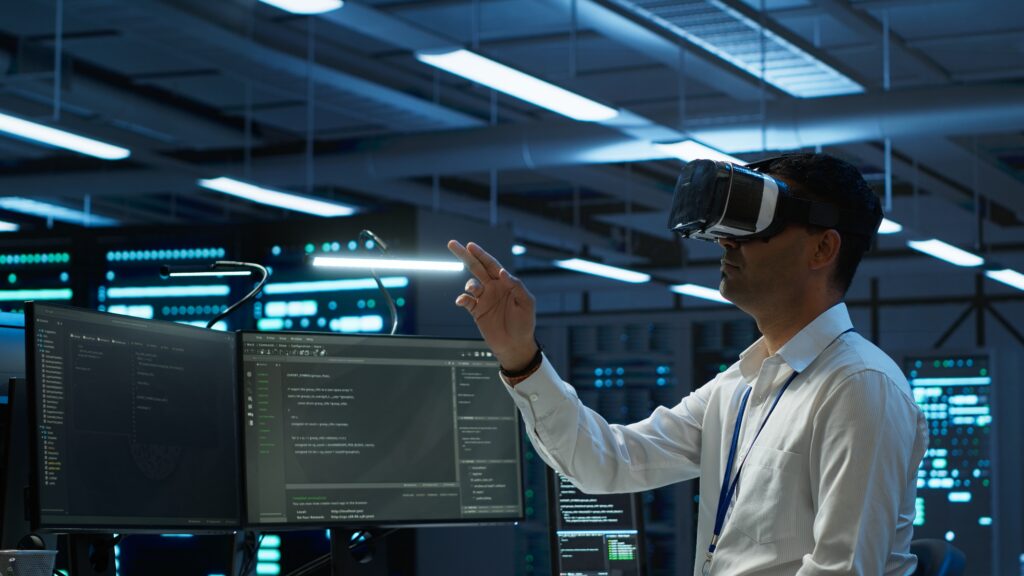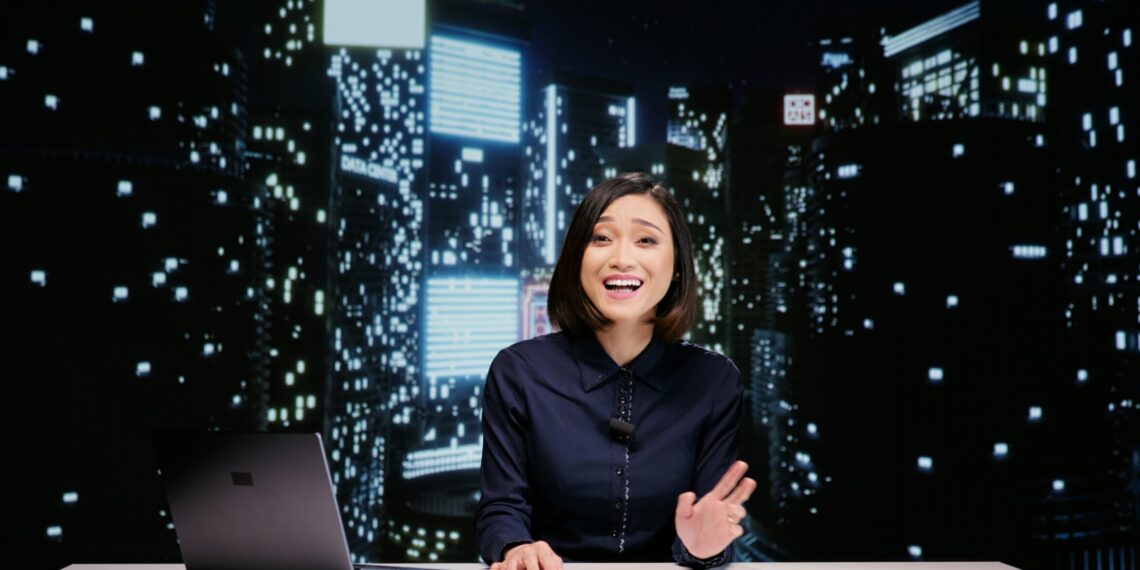I spent the past year living with ftasiastock technology—testing ideas, pulling data, stress-testing signals, and trying to decide where it genuinely helps and where it adds noise. I came out of the process more optimistic than I expected, but also more disciplined about how to use it. This is my field note: what it is, how it works, what it did for me, where it fell short, and why broader conversations around AI (including the tech behind ChatGPT) and real-world challenges like Galamsey matter to anyone building or adopting data-driven tools in finance.
What is ftasiastock technology
At its core, ftasiastock technology is a data and analytics layer for modern investors. Think of it as an engine that aggregates structured and unstructured market data, cleans and aligns it, and exposes practical workflows for research, screening, portfolio oversight, and automation. The emphasis is on speed-to-insight: turning raw market noise into usable signals or guardrails without requiring you to build an entire quant stack from scratch.
Underneath, it usually touches several core components: market and fundamentals data, corporate events, sometimes news and sentiment, and a compute layer for backtesting or feature engineering. On top sits a user experience that allows you to create screens, track metrics, compare strategies, and sometimes trigger alerts. The promise isn’t magic alpha; it’s better iteration. If traditional tools make you wade through spreadsheets or brittle scripts, ftasiastock technology aims to shorten the path from “idea” to “evidence.”
The landscape this year
Markets were choppy, narratives moved fast, and retail and professional workflows continued to converge: everyone wants faster answers with fewer steps. I noticed three forces shaping how ftasiastock technology is being used. First, data availability improved, but the bottleneck shifted to data quality and alignment—when you stitch together pricing, fundamentals, and news, even small timestamp or survivorship issues can skew results. Second, transformer-based language models became a practical interface for research—summaries, document extraction, and query-over-data are no longer niche. Third, governance mattered more: investors asked for audit trails, explainability, and reproducibility to avoid “black box” behavior.
Within this context, ftasiastock technology felt competitive where it emphasized practicality: clean connectors, sensible defaults, transparent metrics, and straightforward exports for verification. Where tools felt immature was less about features and more about trust—do the results replicate out-of-sample, and can users understand why a signal fires at all?
How it actually works
Day to day, I found the data pipeline is the make-or-break piece. Ingesting price histories, fundamentals, calendar events, and sometimes alternative data is table stakes; the difficult part is aligning it all to prevent look-ahead bias, and normalizing identifiers to avoid silent errors. Once that’s reliable, you can design features: simple ones like rolling returns, volatility, valuation ratios, and sector exposures; or more advanced constructs like regime flags, earnings revision momentum, or text-derived sentiment from transcripts.
Signal generation typically falls into familiar families. Momentum and trend-following measures the direction and strength of price moves. Mean reversion looks for short-term dislocations. Quality and profitability screens lean on accounting signals. Sentiment tools try to translate language into numbers. Some platforms layer anomaly detection—a way of flagging unusual behavior relative to history. The decision layer then converts signals to actions: ideas for further research, alerts for risk thresholds, or backtested strategies for comparison with a benchmark.
Where ftasiastock technology helped most was in compressing the loop: feature → test → review → adjust. Instead of tweaking code for hours, I could run multiple variations quickly and see stability across periods and regimes. That speed is only worthwhile, though, if you pair it with strict validation.
Lessons learned
I had real wins. I built a routine that used valuation plus earnings revision data to surface weekly candidates, then I overlaid simple risk rules based on recent drawdowns and liquidity. The outcome wasn’t a dramatic outperformance story; it was fewer bad decisions. I cut down impulsive trades and spent more time on the right questions: “What actually explains this edge?” and “Does it survive transaction costs?”
I also hit pitfalls. The biggest was overfitting. With enough knobs, you’ll find a backtest that “works.” The cure was discipline: out-of-sample tests, walk-forward validation, and explicit constraints on strategy complexity. I learned to pause when a result looked too clean and break it intentionally—shift windows, reorder dates, remove a feature—to see if it still holds. Data quality was another trap. Small timestamp mismatches between price and fundamentals produced phantom signals that vanished in live conditions. I ended up building an audit checklist: confirm releases, check survivorship, and inspect extreme values.
If I started again, I’d set narrower objectives early: “Reduce drawdown volatility by 20%,” or “Generate five credible new ideas per month.” I’d also track model drift—when a feature’s importance changes over time—and maintain a journal of changes so I can explain outcomes to myself six months later. The hidden value of ftasiastock technology wasn’t just returns; it was better record-keeping and faster post-mortems.
AI in ChatGPT
People often ask what AI technology sits behind tools like ChatGPT and whether any of that crosses into investing workflows. The foundation is the transformer architecture, a design that excels at modeling sequences of tokens—words, characters, even code—using attention mechanisms. These models are pretrained on very large collections of text to learn patterns in language, then fine-tuned to follow instructions and aligned with human feedback to make responses more helpful and safer. They’re not databases and they don’t “know” markets in real time by default; they generate text based on patterns learned during training, and can be connected to external data or tools when needed.
For finance, the relevant capabilities are pragmatic. They’re good at summarizing long documents like earnings calls and filings, extracting structured facts from unstructured text, drafting explanations of complex concepts, and serving as a natural-language interface to data—so you can ask, “How did operating margins shift quarter-over-quarter for these tickers?” and get a structured answer if the system is connected to the right database. The limitations matter, too: without guardrails and trusted data connections, they can generate confident but incorrect statements. That’s why pairing them with a verified data layer and clear constraints is key.
The connection to ftasiastock technology is clear: LLMs can speed up research and user interaction, but the numerical evaluation, validation, and execution logic still require proper quant hygiene. Use these models to reduce friction and surface hypotheses; let robust datasets and tests decide what survives.
Practical applications
After blending ftasiastock technology with language models, I found several workflows that were worth keeping. Natural-language queries over portfolio data made oversight faster: “Show positions with three-month beta rising and earnings next week.” Summaries of transcripts helped me triage which companies to investigate more deeply, while sentiment extraction provided a rough—but sometimes useful—signal when cross-checked with price action and revisions.
Signal ideation also improved. I used LLMs to brainstorm plausible features—like combining inventory turnover changes with sector peers—and then I translated those into concrete, testable measures. The key was a strict gate: no feature moved into a live test without a rationale I could explain, a historical justification, and clear risk controls. Having those constraints prevented me from chasing every shiny object.
On the compliance and communication side, drafting rationales and post-trade notes became less onerous. When performance moved, I could quickly assemble a narrative grounded in actual metrics and exposures. That made review meetings more focused and documented my decision-making for later analysis.
Tackling Galamsey with technology
Galamsey—illegal small-scale mining—has severe environmental, social, and economic costs, from deforestation and water contamination to community disruption. Technology can help, but only as part of a broader framework that includes governance, community engagement, and sustainable alternatives. The pieces that work together look like this.
Satellite imagery and remote sensing detect land disturbance patterns and river turbidity indicative of mining operations. High-frequency imagery can spot changes in vegetation cover, sediment plumes, and access roads. Drones provide local verification when ground access is difficult or risky, capturing evidence for enforcement with better precision and lower cost than manned patrols. Machine learning models trained on labeled imagery can classify likely mining sites, triaging where to send limited enforcement resources.
On the ground, water-quality sensors measure turbidity, pH, and heavy metals to corroborate suspected activity and track environmental recovery after interventions. Traceability systems—often using cryptographic signatures and tamper-evident records—can help separate legitimate, licensed production from illicit flows, reducing the market for illegally sourced minerals. Community reporting channels, ideally with anonymous options and geotagging, bring local knowledge into the system and create a feedback loop for credibility.
None of this works without governance. Clear protocols must link detection to action, with responsible agencies empowered to respond and transparent reporting to the public. Incentives matter: programs that offer alternative livelihoods, training, and land restoration funding can shift the calculus for communities otherwise dependent on illicit mining. Privacy and false positives are real risks; systems should minimize surveillance creep, audit model performance, and ensure that human review precedes enforcement.
The takeaway for anyone building technology—whether for markets or environmental protection—is similar: data without accountability and community buy-in rarely achieves durable outcomes.

What sets ftasiastock technology apart
The strengths I noticed were practical. It reduces time from question to answer, offers broad data connectors, and supports everyday workflows like screening, health checks, and post-trade analysis. Its value scales with your clarity: the more specific your goals and the more explicit your guardrails, the better it performs. Where I wanted more was explainability—being able to attribute results to particular features or regimes—and deeper hooks into execution and real-time risk so ideas move to production with fewer handoffs. Black-box strategies felt fragile; interpretable ones held up.
I also appreciated the emphasis on auditability. A reliable trail—inputs, parameters, timestamps, outputs—turns a promising result into something you can defend. When I found gaps, it was usually in edge-case handling and documentation of data quirks. That’s not unique to ftasiastock technology; it’s endemic to most modern analytics stacks. Still, closing those gaps pays for itself when markets shift.
Getting started
The best way to adopt ftasiastock technology is to anchor it to outcomes. Decide what you want: fewer drawdowns, more consistent idea flow, or better compliance documentation. Build a clean data foundation with explicit checks for survivorship, split adjustments, timestamp alignment, and outlier handling. Start small with an interpretable strategy and a benchmark that reflects your opportunity set.
Set validation rules before you test—walk-forward or rolling windows, stress periods that include crisis regimes, and limits on how many features you’ll allow. Write down your risk guardrails: position sizing rules, stop-loss logic, sector caps, and exposure limits. Operationalize with alerts, journals, and periodic reviews where you compare realized results to expectations and update your priors. Keep a change log; treat your process like a living system rather than a one-off project.
The future
I’m watching three fronts. Explainability will keep improving, especially around feature attribution and regime-aware diagnostics that tell you when to trust a signal. Natural-language agents tied to live portfolios will move from novelty to necessity for oversight tasks, while still deferring to strict data and execution pipelines. Integration with brokers and real-time risk engines will tighten, enabling faster feedback loops between research and trades without sacrificing controls. On the regulatory side, transparency features—data lineage, audit trails, reproducible runs—will shift from “nice to have” to mandatory in many contexts.
For users, the implication is simple: the bar for rigor is going up, and the tools to meet it are becoming easier to use. The differentiator won’t be access to data or code libraries; it will be process discipline and clarity of purpose.
Frequently asked questions
Is ftasiastock technology suitable for beginners?
Yes, if you start with clear goals and avoid over-optimization. Focus on simple screens and risk checks before complex models. Build intuition before automation.
Does it replace human judgment?
No. It accelerates research and adds guardrails, but judgment remains central—especially in defining objectives, evaluating trade-offs, and handling regime shifts.
How does it handle privacy and security?
Responsible implementations keep sensitive credentials and positions encrypted, limit data egress, and maintain detailed access logs. As a user, favor platforms that document these controls and undergo regular reviews.
Can it connect to my broker or tracker?
Many setups support exports or APIs. The key is ensuring that any live connection preserves your risk controls and leaves an audit trail.
What are realistic expectations?
Aim for fewer mistakes, faster feedback, and a more consistent process rather than dramatic outperformance. If returns improve, great—but your baseline win is better decision quality.
Closing thoughts
After a year with ftasiastock technology, I changed more in my workflow than I expected. I journal more, test less impulsively, and separate idea generation from validation with clearer gates. I spend less time wrangling data and more time interrogating assumptions. I’m quicker to ask, “What would falsify this?” and “How would this behave in a crisis?” The net effect is calm—not because the tools predict the future, but because they help me respond to uncertainty with structure.
That’s the real promise here. Not silver bullets, not secret edges, but a sturdier process that holds up when noise gets loud. If you approach ftasiastock technology with that mindset—curious, skeptical, and disciplined—you’ll likely find it earns its place on your desk. And if you carry the same principles into bigger challenges, from responsible AI use to environmental enforcement against Galamsey, you’ll see a common thread: technology is most powerful when it’s paired with solid data, clear intent, and human responsibility.
References
- Transformer architecture and large language models: Original research on attention mechanisms and subsequent work on instruction tuning and human feedback alignment provide the foundation for modern conversational AI used by tools like ChatGPT.
- Data quality and market research practices: Established methodologies in quantitative finance emphasize survivorship-bias-free datasets, timestamp alignment, walk-forward testing, and rigorous out-of-sample validation for reliable backtests.
- Remote sensing for environmental monitoring: Satellite and drone-based detection of land-use change, water turbidity, and vegetation loss are widely used approaches for identifying activities such as illegal mining, complemented by IoT water-quality sensors and traceability systems.
- Governance and auditability in financial tooling: Best practices include data lineage tracking, reproducible pipelines, encrypted credential storage, and detailed access logs to ensure transparency and compliance across research and execution workflows.













































